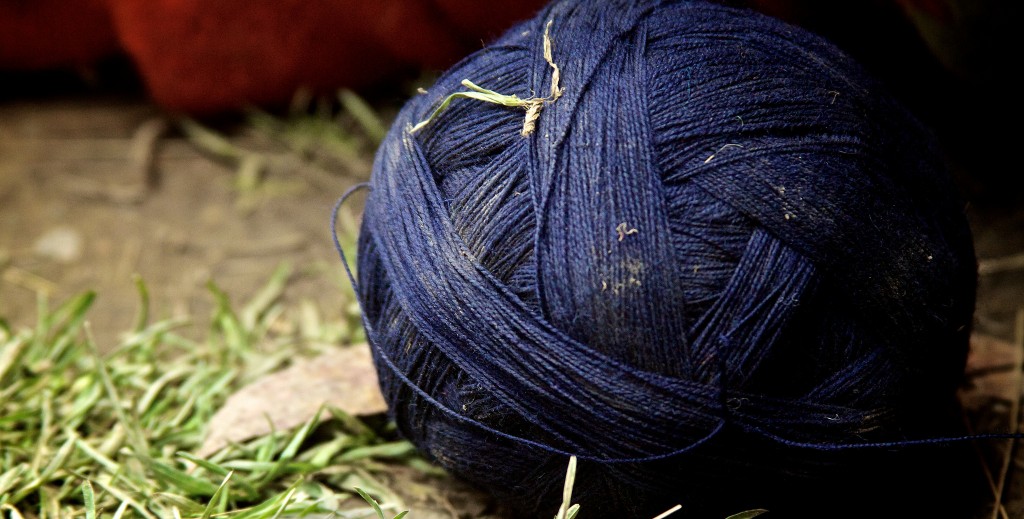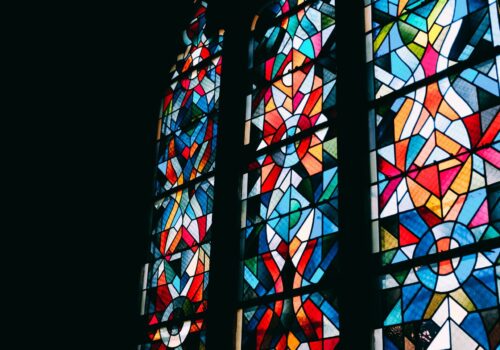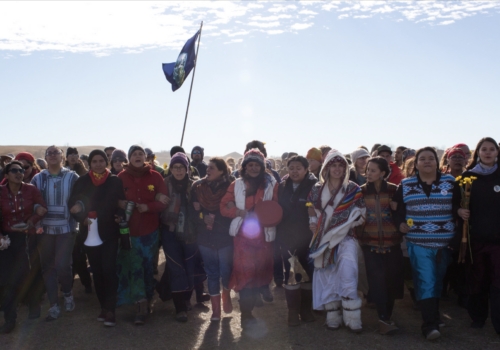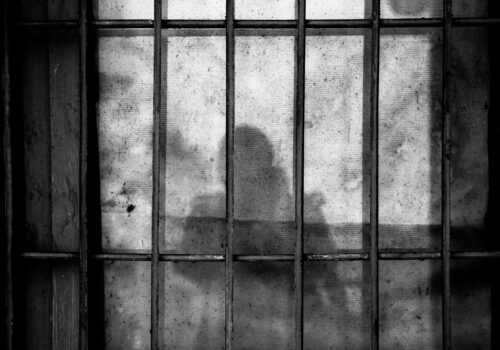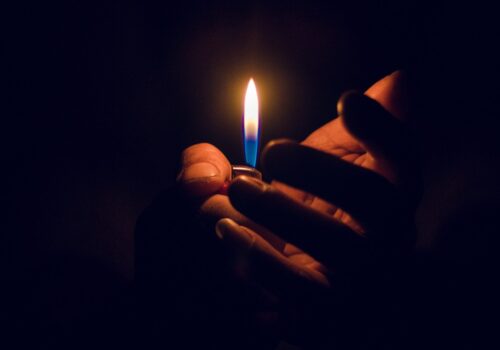Download PDF: Coleman, The Womb Circle
Introduction
I will not desecrate holy places.
I will not speak evil.
I will not abuse my sexuality.
I will not cause the shedding of tears.
I will not sow seeds of regret.
These are five of the forty-two laws of the Kemetic neteru Ma’at that I and six other African American women recited daily as we undertook a program of nutrition and spirituality designed to address our reproductive health. Ma’at is the neteru or deity of truth, balance, order, law, morality, and justice in the religious system of ancient Egypt that is often referred to as Kemet or KMT. Ma’at is often represented by a feather on one side of weighing scales, or just a feather alone, to indicate the relative lightness of truth.
This essay describes how seven African American women from various faiths adopted a nutritional and spiritual program based on an African traditional religion in order to engage a health concern that is inadequately addressed by Western traditional medicine. This essay describes the impetus for the process and some of the rituals that were performed. Highlighting some of the challenges that such a process poses to contemporary theological discourse, this article will offer suggestions for how religious scholars might begin to theorize this activity.
Impetus for the Process
Six years ago, I was diagnosed with fibroid tumors, which are benign tumors that grow in and/or on a woman’s uterine wall. Common symptoms of fibroid tumors include heavy menstrual bleeding, prolonged menstrual periods, pelvic pressure or pain, frequent or difficult urination, constipation, and pains in the back or legs. Some women with fibroid tumors do not experience any symptoms.
When I was initially diagnosed with fibroid tumors, the situation was rather urgent. I was in a tremendous amount of pain, and I was losing blood at a rate that was unsustainable. At the time, two tumors were found. One could be removed with a rather simple outpatient procedure. The other would require major surgery for removal. So, taking the route of least invasion, I had one removed. The symptoms went away immediately. I nearly worshipped my doctor for taking away the pain. I was aware that the other tumor was still there, but it did not appear to be problematic. Because I had health insurance and a lot of perseverance, I continued to monitor the other tumor over the years. Each time I met with a doctor, we discussed and settled on the least invasive—as in non-surgical—approach to dealing with it: “Do nothing and hope it doesn’t bother you; have children as soon as possible.”
More recently, I came to a place where I had to make a decision about removing the second tumor. I had not had children. The tumor had grown. The decision to remove the first tumor was difficult, but it was made easier by the level of debilitating pain I was living with. I wasn’t in much pain when I had to make the more recent decision. The doctor used words like “tumor” and “probably benign” and “well, we don’t know” and “you could take your chances.” My gynecologist indicated that surgery was elective, but if I wanted to preserve fertility, I could either try to get pregnant soon or I had one surgical option. We discussed the benefits and disadvantages of each approach. For medical, economic, and time management reasons, I had about four to six months to make a decision.
I began to research. Approximately 30% of women experience adverse symptoms from fibroid tumors, although as many as 75% of women could have fibroids if one includes the women who don’t experience any symptoms. Fibroids are most common in women of childbearing age and even more common in women over age thirty-five. Like many other medical conditions, black women in America experience fibroid tumors at a rate that is three to five times higher than white women in America.[1] Fibroids appear to have causes that are genetic, hormonal, environmental, or some combination of these. Researchers are not sure. Experts have various ways of removing or reducing them, but there is no medically accepted method or technique for preventing them.
I share this not because I want to air my personal health diagnoses with a wider public. I share this because I believe that women are socialized to be silent about our pains, silent about our sufferings, and silent—if not embarrassed—about our reproductive health. We allow people—usually men—to relegate these health concerns to “women’s issues,” and their treatment and care rarely receive the same caring attention as more “gender neutral” conditions. More importantly, such silence leads to self-blame, a lack of education, isolation, and disempowerment. Thus, I consider it a feminist and womanist act to resist this silence and discuss an embodied aspect of many women’s existence.
As I weighed the pros and cons of having major surgery along with the realities of my health, hopes, and current life and finances, I felt myself at a standstill. I sensed that there had to be another way. It was then that I remembered a book I had purchased years ago: Sacred Woman: a Guide to Healing the Feminine Mind, Body, and Spirit, a 416 page book by Queen Afua, a Brooklyn-based holistic health practitioner.[2] As the title indicates, Sacred Woman is a guide for women to follow to improve and maintain their reproductive health systems. Queen Afua is a nutritionist, herbalist, yoga instructor, and a priestess of the Kemetic faith. She bases her health system on Kemetic spirituality.[3]
Queen Afua argues that women’s reproductive systems are imbalanced and toxic because of their diets and historical and spiritual blockages. Her system is designed to heal women’s bodies, minds, and spirits.
The Womb Circle
Intimidated by a large book that requires drastic and intense lifestyle changes for four weeks to nine months, I adapted Sacred Woman to my life and current needs. In my adapted version, there were four components to my month-long process of exploring reproductive health: diet, prayer and meditation, Womb Journal, and Womb Circle.
Sacred Woman promotes a vegan and raw foods diet (food heated to a temperature less than 104°-115°F). Certain foods should not be eaten: things like refined sugars; or soy products, which increase the estrogen in a woman’s system and thereby contribute to the growth of fibroids. Other foods are recommended: berries and okra (not together, of course). She prescribes a womb tea made of dandelion, raspberry leaves, and goldenrod. Each morning begins with a cleansing drink made of water, apple cider vinegar, castor oil, olive oil, two cloves of garlic, and cayenne pepper. Other supplements are taken to guarantee nutritional health: vitamins C, B, and E; spirulina, wheat grass, lecithin.
I engaged in a series of prayers and meditations between 4:00 and 6:00 a.m. each day. I constructed an altar in the corner of my bedroom with white cloth, candles, water, a healing aloe plant, and the colors particular to addressing fibroids—red and blue. I also used myrrh and frankincense to anoint my body and the room and held a small bloodstone in my hand. I prepared a small bowl of food to feed Yemoja, the orisha in the religion of the Yoruba people of West Africa who represents the ocean, fertility, and motherhood: molasses, black-eyed peas, coconut, cowries shells.
I found pictures of role models—living and deceased—who model excellent health and courage: Queen Mother Moore, Dr. Sharon Oliver, Audre Lorde, Zora Neale Hurston, my grandmother. Every day, I poured water libations to the ancestors and asked the ancestors to guide me. I recited the principles of Ma’at. In a series of seven prayers, I prayed to the world, to all women, and for personal blessings. I adapted the prayers that Queen Afua recommended to the orisha (deities) of the West African Yoruba religion, with which I have a strong connection. I also did meditative breathing through my womb that used various visualizations of health and wellness. Some involved the colors and the stones I placed on my altar. To facilitate the prayers and meditations, I typed and printed them on index cards. This also allowed me to take them with me easily when traveling.
This kind of practice is not well done alone. Queen Afua recommends forming a “Womb Circle” of women who will gather together. Having recently moved to the area, I had only two female friends who I thought might be interested in taking this journey with me. I had less than a week to identify six to ten women and gather them in order to work this program into my schedule. I emailed my story and proposed process to my two friends and asked them to invite anyone they thought might be interested. Within a week, there were seven African American women in my living room who had experience with fibroid tumors and who were interested in addressing them spiritually and nutritionally.
Of the seven of us: five have children, two are married, four are academics, one is a health practitioner, one is a home schooler, one is working on her bachelor’s degree; at least two love women sexually and non-sexually; three practice New Thought religion, three are Christian, two have no religious affiliation, two practice a traditional West African religion.
We gathered once a week for a month. We ate raw and cooked vegan food with recommended ingredients, and we set up an altar upon which we each placed an item we considered sacred. We lit candles, took deep breaths, and talked about our experiences with the rituals. As per Sacred Woman’s recommendation, we surrounded ourselves with the images and sounds of women: music by Sweet Honey in the Rock and Mary J. Blige. We danced. We watched movies with female protagonists of color: Frida, Whale Rider, Rabbit Proof Fence, The Secret Life of Bees.
We discussed our Womb Journals. Every day, we each kept a Womb Journal where we asked ourselves a series of questions from Sacred Woman. Actually, we were asked to begin a conversation with our wombs. Questions included: Are you friends with your womb? Why? Why not? How have you silenced your womb? When you have touched the entrance to your womb or vagina, how did you feel about her? Were you embarrassed? Did you feel at ease? How many of your friends, associates, and family members have fibroid tumors or other female diseases? Discuss their conditions. What are some of the pains you’ve felt in your womb since childhood, your teens, or as a young adult, mother, or elder? How do you feel about sex? Ask your womb how she feels about your relationships.
I believe that the Womb Journal was the most challenging of all the rituals. The questions and meditations are based on the proposal that fibroids come from life’s tensions and womb traumas that we and/or our ancestors have experienced. As women have held all these challenges inside, remained silent about our pains, pushed through emotional difficulties in order to take care of pragmatic details, the pain located itself somewhere—in the fibroids of our wombs. Healing the body requires healing one’s self and the wounds of one’s ancestors that one carries. First we had to be honest about them, and then we had to breathe through them and release the emotional grip they had on our lives. This kind of emotional work was more difficult than drinking oil, vinegar, water, and garlic together. Several women expressed fear that if they explored pains that deep and significant, they would not be able to function—i.e., go to work, care for family, or get out of bed.
We encouraged ourselves with the words of Audre Lorde:
I was going to die, if not sooner then later, whether or not I had ever spoken myself. My silence had not protected me. Your silence will not protect you. But for every real word spoken, for every attempt I had ever made to speak those truths for which I am still seeking, I had made contact with other women while we examined the words to fit a world in which we all believed, bridging our differences. And it was the concern and caring of all those women which gave me strength and enabled me to scrutinize the essentials of my living.[4]
The Womb Circle and Religious Studies
The activity of this Womb Circle raises several questions: What kind of religion is located so firmly in breath, body, and prayer? Can addressing one’s past heal the present? How have these African American women managed to incorporate rituals of a traditional Kemetic religion in addition to the non-Kemetic religion they usually practice?
The Womb Circle practice described here exhibits traits of womanist religious activity. There are connections to Alice Walker’s depiction of “womanist.” In the Womb Circle are women who love other women, sexually and/or nonsexually. There is a celebration of women’s culture, emotional flexibility, and strength. We created a women-only space for a couple of hours each week (leaving significant others, male friends and relatives, and children to another’s care) for the sake of our health in ways that affirm Walker’s statement that a womanist is “not a separatist, except periodically for health.”[5] Our activities affirmed a love of music, dance, food, Spirit, and ourselves.
More importantly, the Womb Circle draws from an African religious tradition as articulated by an African American woman healer to create a holistic practice for African American women that is spiritual, physical, emotional, individual, communal, historical, and hopeful. Our shared challenges around reproductive health brought us together. Layli Philips suggests that womanism can hold contradictions together: “From an analytic perspective, womanism appears paradoxical and logically inconsistent, and from an analytic perspective, these are fair assessments—yet womanism’s criteria for self-evaluation are not analytic. They are holistic, affective, and spiritual.”[6]
Conversations in religious pluralism do not well account for practices such as the Womb Circle. Alan Race categorizes responses to religious plurality as exclusivist, inclusivist, and pluralist.[7] To briefly explain, the exclusivist position argues that there is only one valid religion. Salvation and truth can only be found in one religion. This has been the dominant Christian position throughout the ages. An inclusivist position argues that one religion, again usually Christianity, is the preferred or superior religion, but salvation is possible to all people in their own religions. This is possible because of the far-reaching authority of Christ’s atoning work. This is especially the case if another has never heard of Christianity. If one has heard of Christianity, then conversion is the proper response. A pluralist position affirms the validity of multiple religious traditions. Thus religious plurality simply recognizes that we live in a time when we encounter multiple religious traditions. Religious pluralism is a normative position that affirms that plurality is a positive good and something we must accept. This plurality can be accepted positively as a rough parity of various religions or negatively as a rejection of the need to believe that one religion is exclusive or superior to others.
To review a couple prominent pluralist approaches briefly: John Hick’s position is well summarized in the common analogy of the large elephant.[8] Imagine several people in one room touching different parts of a large elephant. Their vision is inhibited, and so they only know the part of the elephant that they are touching as their reality—the tail, the broad side, and the trunk, for instance. But it is indeed one elephant. Hick argues that there is a God or transcendent being beyond or behind the various religions that we experience. It hinges on a Kantian philosophy that human beings do not have direct access to the transcendent or divine or source of religious devotion.
Paul Knitter has argued that the basis and rationale for religious pluralism should be for the purpose of addressing the world’s ills.[9] He believes that Christians have a gospel command to learn about other religions and to work with persons in non-Christian religions towards a common ethical goal. While Marjorie Hewitt Suchocki arrives at this argument in significantly different ways, she too concludes that the differences among the religions must be acknowledged and valued.[10] She believes it is possible, yea necessary, that even while standing in one’s own tradition, religious pluralism can facilitate the ends of friendship, peace, and the common good.
To offer a third approach, John Cobb discusses religious pluralism as an act of mutual transformation. A Whiteheadian philosophical framework allows him to assert that Christianity can affirm an ultimate—creativity—that is not identified as God. Acknowledging two ultimates, one of which is not God, facilitates conversation between Christianity and non-theistic religions. The process philosophical framework of interdependence and radical relationship also allows Cobb to assert that individuals who interact with another religious tradition should “pass over” into the tradition, not just learning from it, but being changed by it. Likewise, their experiences with the other tradition should affect and change how that religion evolves and is experienced by its own adherents.
The Womb Circle draws attention to at least one problematic assumption in all the conversations about religious pluralism as they tend to occur in the academy and in wider public life. The assumption is that each of us identifies him or her self in one discrete religious tradition and then interacts with those other people who also identify themselves as members or adherents of a different and yet also single and discrete religious tradition.
The Womb Circle exists as part of a larger African American religious tradition that illustrates that this assumption is, in many contexts, fallacious. That is, there are individuals—indeed entire communities—that do not function as members of a single unitary religious tradition. There are individuals—indeed entire communities—that live and function as members of multiple religious traditions simultaneously. In these contexts, conversations about religious plurality are not just between discrete faith traditions and communities—about being interreligious—but rather about being multi-religious. And while examples may be found outside of African American religions, I believe that African American religions are distinctively qualified to discuss this multi-religious existence because this it is not a new phenomenon or realization for African American religions. Rather, multi-religious living is woven into the history and reality of African American religions.[11]
African American religions have long been referred to as syncretic religions. That is, in the process of slavery, enslaved Africans who had their own worldview that included an indigenous or traditional African religiosity, and for some an Islamic spirituality, encountered—rather violently—the Christianity of the Western enslavers and created distinctive religious traditions. The “new” religion created varied—depending on geographical locale, the pattern and practice of enslavements, the form of Christianity that was encountered (Methodist or Baptist Protestant Christianity or Catholicism), the indigenous religious experience of the enslaved African, and the conscious decisions of the religious practitioners. As a whole, however, these encounters produced what we refer to as African American religions and include everything from black Baptist faith to Pentecostalism to vodun and conjure. That is, all African American religions are syncretic, be they the particular forms of black Christianity or the non-Christian religions.
Not only did the development of African American religious history produce new religions, but it also facilitated a multi-religious identity. In his landmark work, Slave Religion, Albert Raboteau notes that a form of African traditional religion coexisted alongside Christianity in the religious lives of enslaved Africans. Raboteau refers especially to conjure, an African derived system of belief that explains the mystery of evil and offers practices—usually drawing on verbal and herbal remedies—for doing something about it. Raboteau writes, “Conjure could without contradiction, exist side by side with Christianity in the same individual and in the same community because, for the slaves, conjure answered purposes which Christianity did not and Christianity answered purposes which conjure did not.”[12] To summarize, the religious lives of the slave community have long been multi-religious as slaves have practiced both Christianity and a form of African derived religion.
Focusing on the religious experiences of African American women, Tracey E. Hucks argues similarly that African American women have historically and continue to have what she calls “dual or multiple religious allegiances” in African derived traditions and Christianity because of its functionality. That is, African American women have negotiated multiple religious traditions for a particular purpose: “for accessing spiritual power and for obtaining alternative modes of healing and recovery.”[13] In fact, Hucks notes that the practices of African derived traditions within slave religion were less about doctrines and rituals than they were about a means to healing and empowerment: “Instead, such traditions relied heavily on the ability of practitioners to mediate supernatural worlds; to perform divinatory rites; to prescribe herbal remedies; and to create protective charms.”[14]
In the post-bellum era, this multiple religious allegiance of individuals and communities in African derived traditions and Christianity does not disappear; it merely goes underground and becomes secretive. There are various reasons for this. One reason is that non-Christian religions, especially those related to Africa, were persecuted by a larger society. Laws were and continue to be constructed to rule out the core practices of African traditional religions: for example, prohibiting the keeping of live farm animals (such as chickens) in urban residential areas. Author and ethnographer Zora Neale Hurston writes this of hoodoo and vodun: “It is not the accepted theology of the Nation and so believers conceal their faith. Brother from sister, husband from wife. Nobody can say where it begins or ends.”[15] Likewise, as Hucks notes, class distinctions formed in the post-Emancipation African American church community. As African American church communities adhered to what African American religious historian Evelyn Brooks Higginbotham refers to as the politics of respectability and assimilation, they distanced themselves from public association with African derived traditions.[16] Lastly, part of the invisibility of this multi-religious community is a direct result of what Hucks also calls the “coexistence” of the faiths.[17] When living with a multi-religious identity, one of the faith traditions may be more noticed or publicly acceptable than another, and hence one aspect of one’s multi-religious identity is rendered publicly secret, invisible, or marginalized. When, how, and the rationale for this secrecy are contextual, but it’s important to note that this public marginalization has not stopped the multi-religious lives/living of many African American individuals and communities.
In her essay “Burning with a Flame in America: African American Women in African-Derived Traditions,” Hucks describes the religious life of an African American woman she refers to as Adejoke. Adejoke is a practicing Yoruba priestess and an ordained Christian minister. She has ancestral roots in both traditional African religiosity and black Baptist women’s leadership. She is active in leadership in both traditions at the same time. Adejoke does not experience any conflict in her “coexistence of traditions”; rather these two religious traditions “exist in a harmonious complementary relationship.”[18] Adejoke does not feel that she has to choose one tradition or another. She states, “On several occasions, divination consultations in the Yoruba tradition have both affirmed and encouraged her participation in Christianity.”[19]
What Hucks refers to as “religious coexistence” or “dual or multiple religious allegiance,” I’m calling a multi-religious belonging. While I do not focus as strictly on the ways in which multi-religious belonging is operative for African American women around issues of empowerment and healing—for indeed I do think this is also true of African American men—I appreciate and uplift Hucks’s insights that multi-religious belonging, especially in traditional African religions and Christianity, is (1) located in religious practices and (2) has persisted for so long because participation in both traditions “works” for its practitioners. There is a functional or pragmatic character to multi-religious living.[20]
The Womb Circle serves as a distinctively womanist example of how lived religious experiences can undermine and subvert the assumptions that we make about religious pluralism. While Queen Afua is clear that her prescribed regimen can be helpful for any woman, her use of a traditional African religion in an American context situates this practice within African American religious studies. I believe the Womb Circle is able to engage in multi-religious belonging because multi-religious belonging is present in the history, the very nature, and the conscious present of African American religiosity. The Womb Circle can teach us important lessons about how religious scholars and theological educators may proceed in light of women’s health and multi-religious consciousness.
Lessons from the Womb Circle
There has long been a value judgment associated with the process and naming of syncretism. In fact, some scholars refuse to invoke the term because the pejorative baggage it carries is so heavy. Syncretism or syncretic faiths have been understood as bastardized or lower forms of an authentic faith, one that was presumably the “real Christianity.” Syncretic faiths are the things that poor people and colored people practice, while a more “pure” or “axial” faith is something to which dominant white communities adhere. My language is intentional because syncretic faiths are referred to as things people practice; “real Christianity” is referred to as something that one believes.
Anthropologically speaking, syncretism is simply the process of change that occurs when multiple cultures, languages, or religions encounter one another and create something new that still bears the imprint of the parent cultures, languages, or religions. When we remember this, we know that there is no “real Christianity,” for Christianity was shaped by the encounter among Judaism, North African worldviews, and Greek philosophy. There are no pure cultures. Religions are embedded in who we are and our cultures; and there can be no encounter—however brief or long-term, voluntary or violent—that does not change who and how we are who and what we are.
The first lesson is that all religions—and cultures, for that matter—are syncretic. The historical development and current practice of all religious traditions are syncretic. The idea that we live in discrete religious traditions and communities is fallacious for most everyone.
The second lesson is a corollary of the first: commonality for pluralistic dialogue and interaction might be religious practice. As noted earlier, most theories of religious pluralism occur around belief and ethics. That is, when we speak of beginning conversations with the Abrahamic faiths of Judaism, Christianity, and Islam, we do so out of a divergent but shared faith. That is, there are common spiritual ancestors, common scriptures, and common beliefs that are shared among those three faiths. There is also a kind of shared dominance in the public world scene, at least in terms of media coverage and influence on the Western world. Paul Knitter and others suggest that the road to being interreligious is paved with a shared ethic. That is, a shared ethic or social issue is the source of our commonality and illustrates both the necessity and value for religious pluralism.
I don’t disagree with these approaches, but I’d also like to suggest another approach informed by the Womb Circle and African American religiosity. An individual—or even entire communities—can be multi-religious in religious traditions with different scriptures and conflicting theological tenets (including the monism or multiplicity of deities) because religious experience focuses more on religious practice than it does on confessional stance. For Christian children of the Protestant Reformation, it can be difficult to take one’s eyes off of the centrality of the words of God, the word of God, the Word of God, and the confessional stance—greatly helped by early Christian creeds and by American evangelical movements—that Christian faith demands. The “sinner’s prayer” of conversion—that one only need believe and confess a particular belief about Jesus in order to be saved—is the hallmark of a faith that locates religiosity centrally in theology.
Yet the Womb Circle gives a different picture. Engagement of the Kemetic tradition in Sacred Woman was less about belief than about particular practices: pouring libations, setting up altars, seeking the assistance of the ancestors, feeding spirits, and eating certain foods. Note the verbs: participating, seeking, making, pouring, and setting up. It’s less about belief and more about practice. I suspect that this is part of what allows for multi-religious belonging. Living in the two traditions does not entail a comparison and contrast of religious belief; rather there is a wider scope of religious practice.
I believe that the work of philosophers and theologians in religious experience is an important starting point for remembering that religions are practiced. Not only can practices be shared but, for many, religiosity is located in the practices; it is sacramental. To be religious is to practice one’s religion. In this sense, we are not born into a faith, nor do we adjust our beliefs in order to belong to a particular faith; nor might we know our faith by our justice-ethics. Instead—or more aptly—in addition, the Womb Circle asserts that our activities reveal our faith. And that activity is primary, with meaning ascribed after practice. This is quite different than asserting that our actions are an overflow or practice of what we believe. The order matters because the primacy of religious practice is what facilitates multi-religious belonging, the Womb Circle, and a non-Western healing system for women’s reproductive health.
Monica A. Coleman is Associate Professor of Constructive Theology and African American Religions and Co-Director of the Center for Process Studies at Claremont School of Theology as well as Associate Professor of Religion at Claremont Graduate University.
Notes:
[1] NIH/NICHD, “Fast Facts About Uterine Fibroids,” December 2005, http://www.nichd.nih.gov/publications/pubs/upload/uterine_fibroids_2005_rev.pdf
[2] Queen Afua, Sacred Woman: a Guide to Healing the Feminine Body, Mind, and Spirit (New York: Ballantine, 2000).
[3] For more information on Queen Afua, see “The Press,” Queen Afua Wellness Institute, http://queenafua.moonfruit.com/#/press/4530805601.
[4] Audre Lorde, “The Transformation of Silence into Language and Action,” in Sister Outsider: Essays and Speeches (Freedom, CA: The Crossing Press, 1984), 41.
[5] Alice Walker, In Search of Our Mothers’ Gardens: Womanist Prose (Houghton Mifflin Harcourt, 2003), xi.
[6] Layli Phillips, “Womanism: On Its Own,” in The Womanist Reader, ed. Layli Phillips (New York: Routledge, 2006), xxv.
[7] Alan Race, Christians and Religious Pluralism: Patterns in the Christian Theology of Religions (London: SCM Press, 1983).
[8] John Hick, An Interpretation of Religion: Human Responses to the Transcendent (New Haven: Yale UP, 1989).
[9] Paul F. Knitter, Jesus and the Other Names: Christian Mission and Global Responsibility (Maryknoll, NY: Orbis, 1996).
[10] Marjorie Hewitt Suchocki, Divinity and Diversity: a Christian Affirmation of Religious Pluralism (Nashville: Abingdon, 2003).
[11] For a note of clarity, when I refer to African American religions, I’m referring to the religious practices of African Americans in the United States. It is important to note that for these purposes the term “African American” signifies self-identified black persons who are descendants of the U.S. slavery system. While this is admittedly a narrow definition that assumes the socially constructed category of race and the binary racial system of the United States it is temporarily needful for this argument. The persons and communities left out of this definition express a religiosity that I would include under the rubric of black religions, but with a different heritage of formation and expression than what I’m calling “African American religions.”
[12] Albert Raboteau, Slave Religion: The “Invisible Institution” in the Antebellum South (New York: Oxford UP, 1978), 288.
[13] Tracey E. Hucks, “Burning with a Flame in America: African American Women in African-derived Traditions,” Journal of Feminist Studies in Religion 17, no. 2 (2001): 90.
[14] Ibid., 91.
[15] Zora Neale Hurston, Mules and Men (Bloomington: Indiana UP, 1963),195, quoted in Hucks, “Burning with a Flame in America,” 92.
[16] Evelyn Brooks Higginbotham, Righteous Discontent: The Women’s Movement in the Black Baptist Church, 1880-1920, (Cambridge, MA: Harvard UP, 1993).
[17] Hucks, “Burning with a Flame in America,” 89-106.
[18] Hucks, “Burning with a Flame in America,” 96.
[19] Ibid., 97.
[20] I am focusing on multi-religious belonging in African American religious experiences, with a primary focus on Christianity and African derived religious traditions. The particularity of this example undergirds much of what I will say, but I think that multi-faith identity can be and is found in other individuals and communities. I believe that this is also the experience of many immigrants, many Native Americans, and those raised in bi-religious or multi-religious families.

